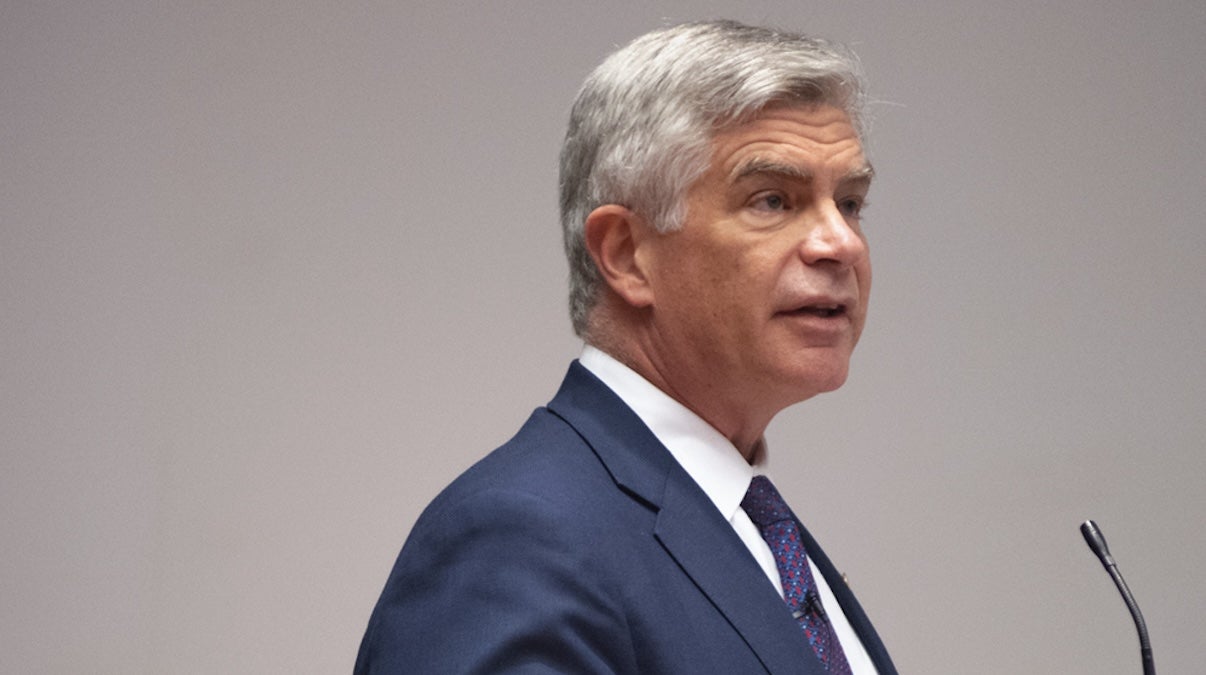From Philly and the Pa. suburbs to South Jersey and Delaware, what would you like WHYY News to cover? Let us know!
The Federal Reserve Bank of Philadelphia has a new leader after nearly a decade.
Incoming president Anna Paulson replaces Pat Harker, whose term expired June 30.
Paulson was selected by a national search process, which included local executives and a public “town hall” for feedback.
There are 12 Federal Reserve Banks that collectively create the Federal Reserve System. The Philadelphia branch oversees research in the Third Federal Reserve District, which includes southeastern Pennsylvania, South Jersey and Delaware. Researchers regularly survey individuals and businesses across the Delaware Valley to gauge the health of the regional economy.
Before his tenure at the Federal Reserve Bank of Philadelphia, Harker led the University of Delaware as college president. He is an engineer and economist by training.
During Harker’s tenure, he oversaw economic research that spanned everything from studying anchor institutions to economic mobility.
In Philadelphia, the Anchor Economy Initiative measured the economic health of educational and medical institutions, but the research was nationwide. The Federal Reserve Bank of Philadelphia researchers contributed to an Anchor Economy Dashboard that pulled in data from 524 regions across the country.
Another strategic initiative under Harker was the Economic Growth and Mobility Project, which aimed to help communities escape poverty. Philadelphia ranked last in the nation for the ability of children to earn more as adults than their parents had, according to Harvard University’s Opportunity Insights research.
During the April Economic Mobility Summit hosted in Philadelphia, Harker told a crowd that good economic policy leads to an American dream accessible to all — and that decreasing economic inequality is an important part of that vision.
“That’s the beauty of this country. It’s always been the beauty of this country. We’ve always given that hope to people. Come here and it can be better for you,” Harker said. “And if we don’t deliver on that promise, if we continue to create a wider and wider gulf, economic history is very clear on this, in my mind, that this leads to an outcome that ultimately we don’t all want.”
One challenge, Harker said during the summit, is that much of what the Federal Reserve does sounds technical and esoteric, like manipulating the federal funds rate, which is the target interest rate that banks charge each other for lending cash reserves.
But the federal funds rate is an important economic indicator, closely watched by businesses, because it influences consumer and corporate purchasing power. If the federal funds rate is increased, that could make it more expensive to buy a home or vehicle, because mortgage and car loans would have higher interest rates, too.
The reason the federal funds rate is closely tracked by the Federal Reserve is because it’s a policy lever to control for inflation.
But in essence, he argued that these technical exercises are really about building a world where everyone can take risks and move the economy forward. And that’s done by creating conditions for a better future.
“That the economy creates the stability that people need to be able to take the risks that will allow them, or their company … to achieve their objectives. To have hope that they can make that happen,” Harker said.
